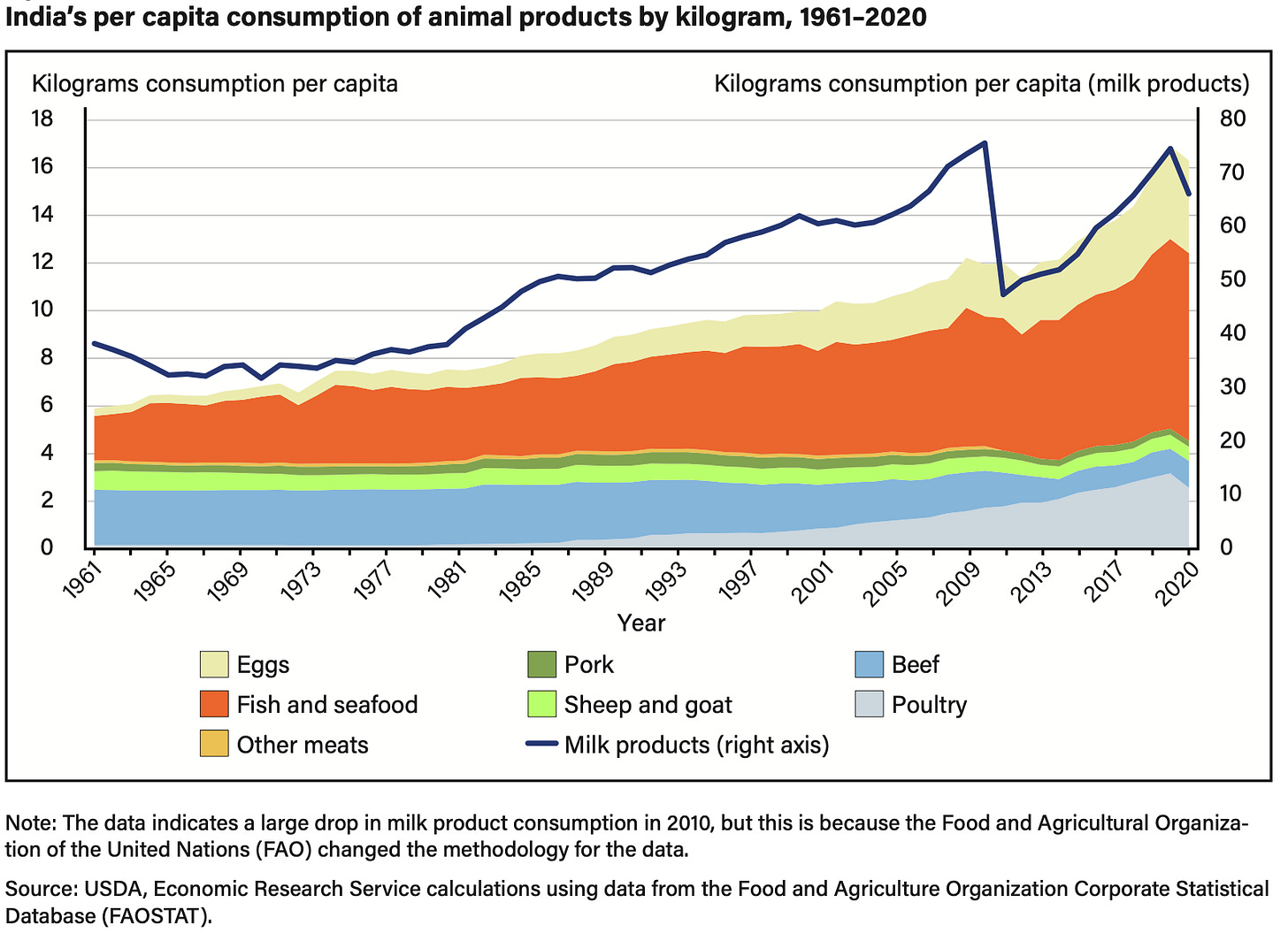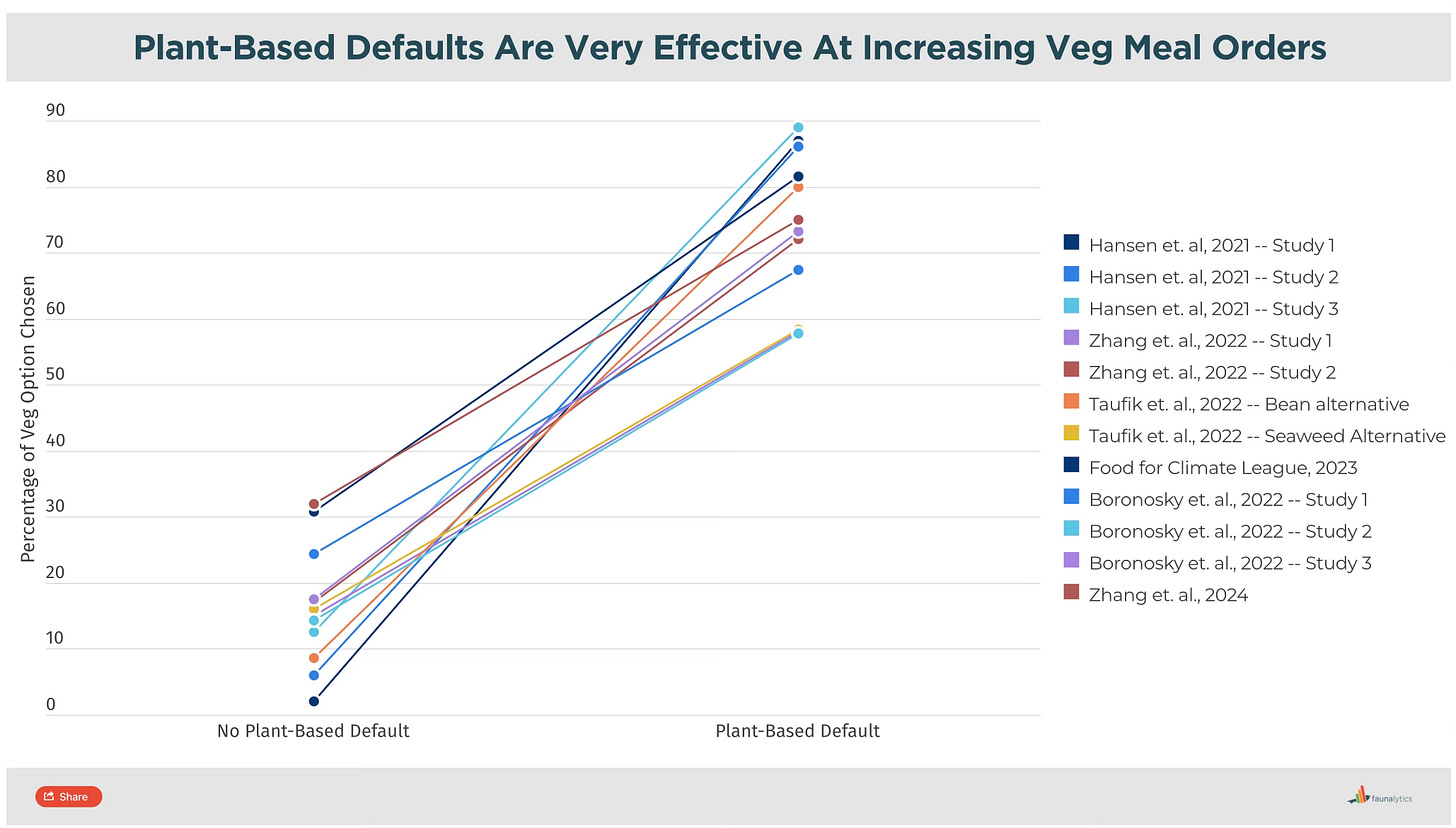4 Lessons from History for Animal Advocacy
What the Past Can Teach Us About Accelerating Progress for Animals
“Those who don't learn from history are doomed to repeat it” is one of the most quoted yet most underutilized sayings out there. For many of us newer advocates (my past self included), our sense of history goes all the way back to the ancient times of the early 2010s. We tend to draw most of our ideas on how to help animals from well-known vegan influencers like Earthling Ed or documentaries like What The Health. And while that’s a solid starting point, it doesn’t have to be the end; especially if we’re serious about helping as many animals as possible. The truth is, animal advocacy has a much longer history, stretching back decades if not centuries. I recently dug into some of that history myself, and I wanted to share a few things that stood out; ideas that I think might help us rethink how we advocate for animals today.
1: We've Been Trying Vegan/Vegetarian Outreach for Longer Than We Realize (With Limited Results)
While advocacy has raised some awareness and sparked some cultural shifts, it hasn’t yet translated into widespread, lasting behavior change on the scale we’d hoped. Animal rights groups have run countless demonstrations, disruptions, and documentaries. In fact organizations like Vegan Outreach have distributed millions of pro-vegan pamphlets every year since the early 2000s, PETA’s YouTube videos have reached 100s of millions of viewers.
While decades of passionate vegan advocacy may have led to a modest increase in the number of vegans, the percentage of vegans/vegetarians in the US hasn't budged much in the last 30 years. Even if we look at more recent data in countries like the UK where some of the most passionate in person and online advocacy has occurred, the percentage of vegans has also remained stubbornly flat (this data is updated every 6 months). One of the largest and only studies of recidivism from 2014 found that 84% of individuals that try plant-based diets return to eating animal products.
All the while, the number of animals slaughtered has grown exponentially (Note: the Y-axis is on a logarithmic scale).

Thoughts and Lessons: Advocacy campaigns should try to measure the effectiveness of their campaigns as well as the number of animals impacted as a result of the campaigns. Additionally, we should also diversify to other strategies that may yield better outcomes for more animals. For all we know, some of the outreach campaigns may have been a net negative for the animals (such as the trend of eating more chickens instead of red meat - more on this here and in a future post).
2: We’ve Had Vegetarian Societies Before, Things Changed
Around 500 BCE, the creators of Buddhism and Jainism promoted principles of non-violence (Ahimsa) that included vegetarianism in the Indian subcontinent. Their influence was so profound that vegetarianism became widespread across significant portions and religions of India. You can still feel the reverberations of these movements today, evident in the prevalence of plant-forward diets, even in meat-eating households (like mine, growing up).
But what's happened since? Despite this deep cultural embedding of vegetarianism, the amount of animal products consumed per capita have continued to grow.

The reasons for this are quite complex but some of the key drivers were: Rising incomes increasing the purchasing power; changing consumer preferences; increased availability of meat; and industrialization of agriculture resulting in cheaper meat. Since the population of India will continue to grow into the mid 21st century, the amount of factory farmed animals will also likely continue to grow (probably exponentially).
Thoughts and Lessons: Even when vegetarian principles become deeply ingrained in cultural and religious norms, a change in economic factors may still drive up the consumption of animal products. This also suggests that values-based advocacy alone may not be enough even if it is widely successful. We may still need to create better alternatives and products, such as plant-based meats or cultivated meat that are simply better than conventional animal products and consistently price competitive.
3: Institutional Reform is an Effective Strategy
Evidence demonstrates that some of the most significant advances in animal welfare came from changing institutions and laws. For example:
Something as simple as making plant based options the defaults have been a very effective strategy:

Adding plant-based days at office cafeterias has also been successful, Green Tuesday is one such initiative in India.
Programs such as School Plates in the UK have already enabled millions of plant-forward meals.
Ironically, even if most people are unwilling to change their personal diets, a big majority of people actually oppose the brutal conditions endured by animals in factory farms. For example, a 2018 ballot initiative in California passed with a strong majority and resulted in the strongest animal welfare law in the US. France and Germany passed laws to ban male chick maceration in 2022.
Thoughts and Lessons: While these small incremental changes seem insignificant towards a vegan world, they've had a significant impact on the number of animals that suffer. Given the number of people that oppose factory farming (but are unwilling to give up animal products), these institutional and systemic changes may offer the most impact. There can also be a compounding effect from advocating for systemic changes that help normalize plant-forward diets.
4: Technology & Alternatives Have Rapidly Ushered in Change
Looking at what's actually moved the needle on animal product consumption throughout history, innovation has consistently outperformed moral persuasion.
Examples include the popularization of margarine, which significantly reduced butter consumption in the 20th century, invention of cars was likely the largest driver of animal welfare by massively reducing demand for horse-drawn carriages, the popularization of faux fur alternatives and subsequent bans have contributed to a decline of the fur farming industry.
This pattern shows up again and again: when good alternatives exist, people adopt them regardless of their ethical stance on animal welfare. The rise of oat milk isn't because everyone suddenly cares about cow welfare - it's because oat milk is delicious, widely available, and competitively priced. Here’s the data for this from the Good Food Institute. One positive point I’d like to highlight is that plant milks already accounted for ~12% of all milk sales in 2023, a number far higher than the percentage of vegans.
My favorite quote on this topic comes from a longtime animal advocate and the founder of the Good Food Institute:
“…Look for a win/win. If you can figure out a solution to a problem that does not require a radical change in how people view the world, that’s going to help. So for me, I thought my goal was to convince everybody to see the world the way I did. It turned out, It’s a lot easier to change the world than to change people’s ideology.”
Thoughts and Lessons: Throughout history, technology and alternatives have been more effective at reducing animal product consumption than moral arguments alone. The best hope for animals may lie beyond convincing a few people to go vegan: creating alternatives so good that animal products become obsolete.
Learning from Past and Current Efforts to Accelerate Progress
If we're serious about reducing animal suffering, history offers some guidance. The animals don't and can't care why humans stop exploiting them, they just want to be free from exploitation. Hopefully by learning from our past, we can accelerate progress toward a better future for animals.
To learn more about the past of animal advocacy I recommend this article.



So happy this popped up in my feed today, LOVED this. Straightforward and powerful. As a fellow vegan I am always trying to lay out the data (in numbers and culture) and you do an amazing job.